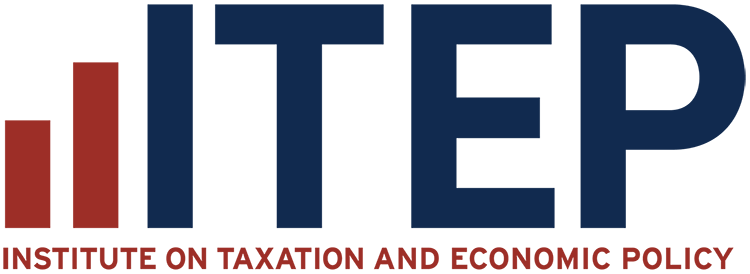Contact: Jon Whiten ([email protected])
Child Tax Credits have been the focus of increased lawmaker attention over the past few years, especially following the dramatic success of the 2021 federal CTC expansion in reducing child poverty and the subsequent resurgence of pre-pandemic child poverty levels. While 15 states now supplement the federal credit with their own Child Tax Credits to better reduce poverty, boost economic security, and invest in children, no cities have yet implemented their own credits. These local Child Tax Credits are a logical next step for local lawmakers looking to deliver meaningful results for their communities.
A new analysis by the Center on Poverty and Social Policy at Columbia University and the Institute on Taxation and Economic Policy, produced with the support of Share Our Strength, focuses on the potential of these credits and finds that local lawmakers could aid in significantly reducing child poverty with relatively modest investments in local Child Tax Credits.
The study focuses on 14 cities (Baltimore, Charlotte, Chicago, Denver, Houston, Jacksonville, Los Angeles, Minneapolis, New York, Oakland, Philadelphia, Phoenix, Seattle, and the District of Columbia) and finds:
- A base Child Tax Credit of $1,000 or less would be sufficient for a 25 percent child poverty reduction (when combined with federal and state credits) in 9 of these 14 cities (in Los Angeles and Oakland it would need to be higher and in 3 of the cities, federal and state credits already reduce child poverty by 25 percent).
- A base credit of approximately $4,000 or less would be sufficient for a 50 percent child poverty reduction in 12 of the 14 cities (in Los Angeles and Oakland it would need to be higher)
- In 10 of these 14 cities, a credit that would reduce child poverty by 25 percent would cost less than 3 percent of the city’s revenues.
- In 8 of the 14 cities, costs for achieving a 50 percent poverty reduction are less than 15 percent of the city’s revenues.
- Local costs for hitting these poverty-reduction targets are much lower for cities in states with robust state Child Tax Credits, such as Minnesota.
- Similarly, the local costs would be markedly lower if the federal Child Tax Credit was expanded as it was in 2021, and if children in lower- and moderate-income families were eligible for the full increased federal credit.
“Given the unprecedented federal retreat from supporting low- and middle-income families, it’s more important than ever for state and local governments to step up,” said Kamolika Das, Local Policy Director at the Institute on Taxation and Economic Policy. “A local Child Tax Credit, complementing federal and state programs, could ease the burden on struggling households while strengthening local economies — boosting demand for neighborhood businesses, stabilizing housing markets, and increasing local tax revenue.”
“The expansion of the federal Child Tax Credit in 2021 showed us firsthand how child poverty can be reduced to historic lows, but action at the federal level continues to stall,” said Ryan Vinh, Research Analyst at the Center on Poverty and Social Policy at Columbia University. “Local governments need not wait to follow the lead of state and federal policymakers: in the same way that cities have been early adopters of supportive policies like minimum wage ordinances and paid sick leave, local governments have a unique opportunity to create their own Child Tax Credit policies to substantially reduce child poverty and set an important precedent that other levels of government can aspire to.”
“We’ve learned that reducing child poverty isn’t only about relief — it’s about creating the conditions for families to thrive,” said Lillian Singh, Senior Vice President for Family Economic Mobility at Share Our Strength. “When cities invest in families through tools like local Child Tax Credits, they’re not just addressing poverty statistics — they’re rewriting the story of what’s possible for families and their children across this country.”
High levels of child poverty are preventable. Federal and state policies continue to reduce child poverty, but there is more that could be done at those levels – and at the local level. Local governments can build on federal and state policy, driving more substantial reductions in child poverty and lessening existing inequities in mostly regressive state and local tax systems.
Local governments have a track record of implementing ambitious policies that support economic well-being. Cities have been early adopters of stronger minimum wage ordinances, paid sick leave programs, guaranteed income pilots, and universal preschool. Local policy efforts also often become models for broader state and federal investments that build on local successes, and local governments that establish Child Tax Credits could continue this tradition.
About the Institute on Taxation and Economic Policy
ITEP is a non-profit, non-partisan tax policy organization. We conduct rigorous analyses of tax and economic proposals and provide data-driven recommendations on how to shape equitable and sustainable tax systems. ITEP’s expertise and data uniquely enhance federal, state, and local policy debates by revealing how taxes affect people at various levels of income and wealth, and people of different races and ethnicities.
About the Center on Poverty and Social Policy at Columbia University
The Center on Poverty and Social Policy at Columbia University produces cutting-edge research to advance our understanding of poverty and the role of social policy in reducing poverty and promoting opportunity, economic security, and individual and family wellbeing. The center’s work focuses on poverty and social policy issues in New York City and the U.S.
About Share Our Strength
At Share Our Strength we’re helping kids, families and communities through our No Kid Hungry campaign – and working on the root causes of hunger to create more financial security for families.



